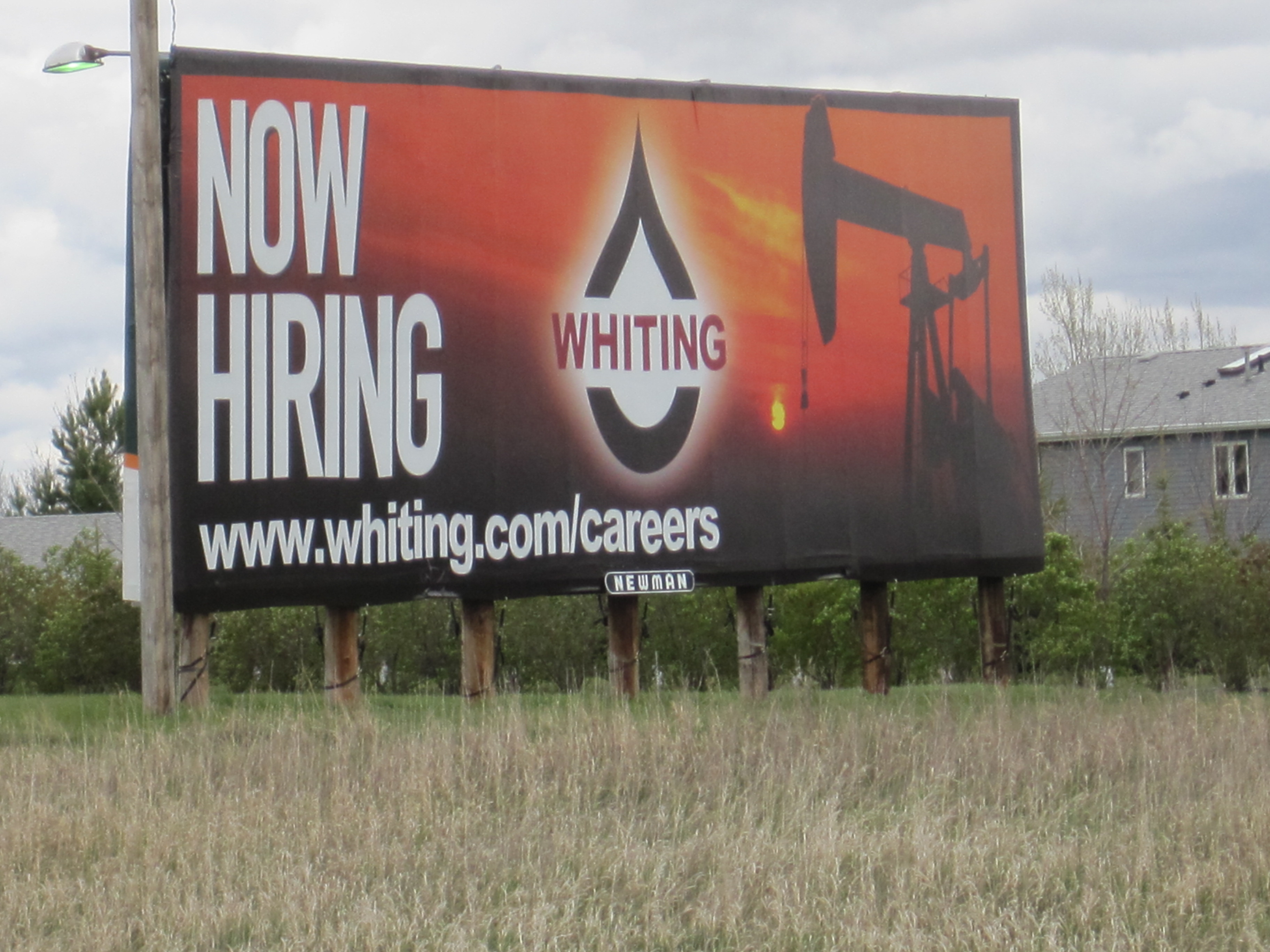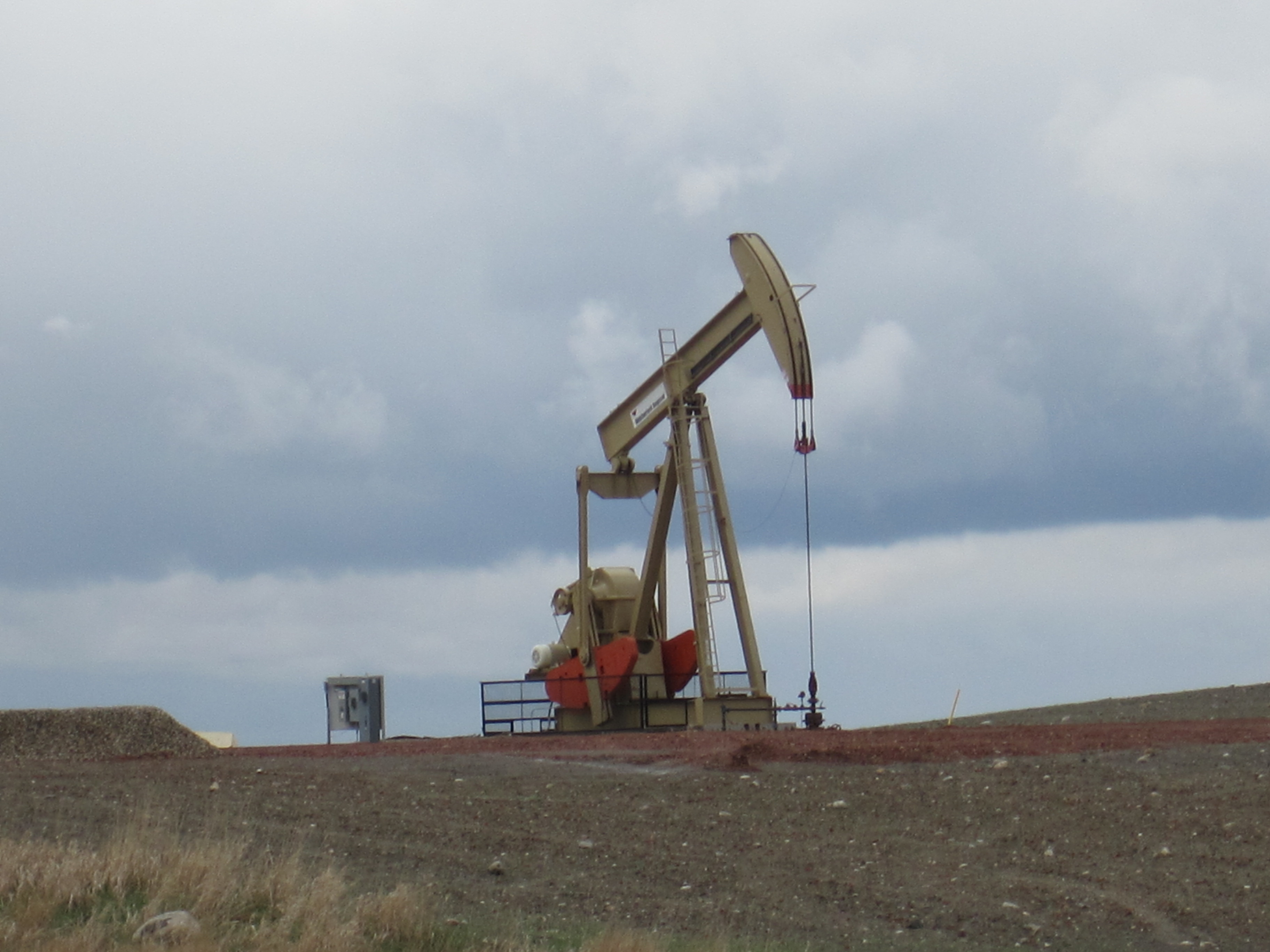Preparing for the Boom #1--Oil Exploration's History in the Dakotas
Dakota Digest - 06/18/2012
by Gary Ellenbolt
Oil was discovered in western North Dakota in 19-53. The crude oil in the Bakken Formation has been called some of the best in the world. But it took the development of technology to make it worth the effort. Hydraulic fracturing-or "Fracking"-retrieves the oil from rocky shale formations deep below the surface. For the last four years Western North Dakota IS the fastest growing region in the U-S. Officials in South Dakota wonder if there's something in it for the far western counties OF the state,too.
KEYZ Radio in Williston, North Dakota, has one of the most powerful signals in the northern U-S. The station at 660 on the A-M Dial spends part of every weekday noon hour with an oil report. It caters to oil workers, local residents, job providers and hunters-all with a stake in what's going on in the Williston area.
What's going on is oil exploration-enough to make Williston the fastest growing micropolitan area in the U-S. That's a term for cities under 10 thousand population. It's the largest city in the region, and Mayor Ward Koeser notes it's getting even larger.
Koeser says, "It's getting kind of wild and crazy around here-we've got a `huge amount of growth. The Census Bureau says we're the fastest-growing Micropolitan area in the Country. Forbes magazine says we're the sixth-fastest growing city in the United States. And while you like the growth, it's difficult to come up with the infrastructure, and things you need to support that kind of growth."
The growth has led to Williams County, and a large portion of western North Dakota, being visible at night from the International Space Station. All of that has come about thanks to oil.
Kathy Neset lives near Tioga, North Dakota, in the heart of that state's oil country. She's a geologist by trade, and a consultant to the oil and gas industry. Stand close enough to Neset, and you can actually hear oil.
Neset has two pieces of shale in either hand-she and other experts say some of the best crude oil on the planet makes up about 20 percent of the gray rocks she's banging together. But, since the discovery of the oil deposits on the North Dakota farm owned Henry Bakken in the early 19-50's, there hasn't been the technology to get most of the oil out of the rocks.
Hydraulic fracturing-known as "fracking"-came along in 2008. The shale containing the oil is broken in a horizontal line in a drilling process. The oil is then extracted, and the broken rocks are brought back to the surface and hauled away.
Some environmentalists are concerned about the practice, and what it could do to groundwater supplies through contamination. But the vertical shaft is covered in cement to a depth below any known water table. South Dakota State Geologist Derrick Iles says it's a safe practice when done correctly.
Iles notes,"to the best of my knowledge, there has been no documented case where hydraulic fracturing, at a mile or two miles has polluted shallow ground water. Yes, there may be things like a tanker overturn at land surface or some oversight at land surface that causes problems. But the actual process of cracking rocks at that great depth physically cannot propagate fractures up to land surface, to the shallow ground sources and cause the pollution."
Traffic at the intersection of U-S Highways 2 and 85 intersect near Williston. Trucks of every size are coming to and going from the oil fields. Pickups full of surveyors and managers and oil workers come and go at all hours, day and night.
Shawn Wenko is Williston's Assistant Economic Development Director. He says every facet of the economy in his region has exploded.
Wenko says, "We've got a lot of building going on-we were number one in the State last year in permit valuations. We had roughly over 357 million in permit valuation. We've seen hundreds of apartments come on-line, hundreds of homes, hundreds of mobile homes-but the demand is far out-pacing the supply. So that's the thing that's holding us back, is the housing and the infrastructure."
The Williston Basin, which includes the Bakken, Three Forks, and other formations that hold the oil shale, stretches from west central South Dakota into Saskatchewan Province. This oil well is one of the first things seen by travelers on Highway 85, about 25 miles north of Buffalo. Many believe there's oil to be retrieved under several counties on South Dakota's western edge. But, Harding County Commissioner Bob Johnson says he's known that all along.
"You know," Johnson says, "as far as the oil development-we've had it for 50 years here. We kind of understand it. You know, whether we'll see the development develop as fast as it did in North Dakota-I don't see that happening at this point. But it could."
Just the fact that it could happen has some people in western South Dakota dreaming big. Most everyone would take the increased revenue and economic development that follows the oil-but there are concerns about tourism and agriculture, the two main lynchpins in the state's economy.


![]()
![]()
![]()
![]()
![]()
![]()
![]()
![]()
Click here to play Real Media:









